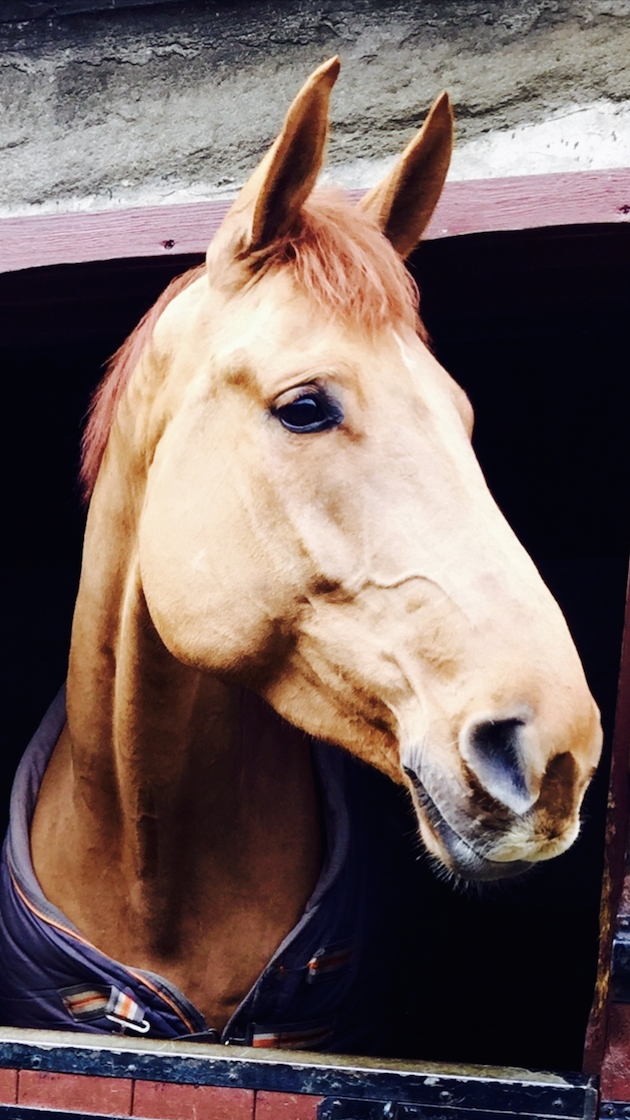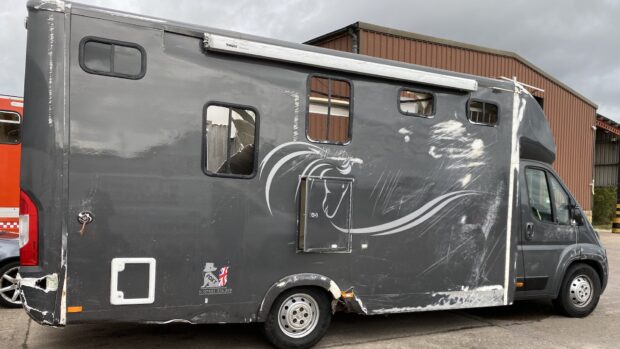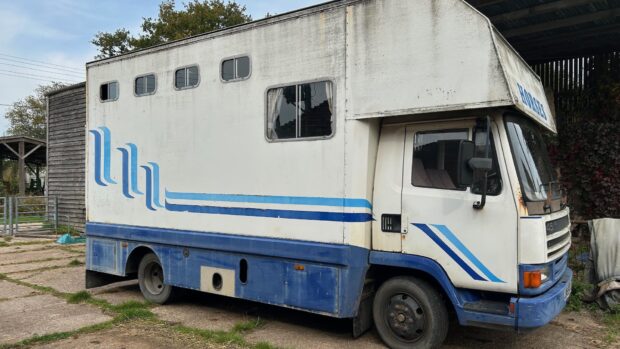The distributor of a horsebox in which a promising event horse died after his leg went through the floor has come to an out-of-court settlement with the lorry’s owner.
Alexanders Horseboxes’ insurers agreed a payout with Carole Mutch, whose horse Gorsehill Echo (pictured, below) had to be put down immediately after the floor failed in Carole’s £65,000 box.
Carole, who said the incident, in March 2015, had “stopped her life”, is now prepared to campaign for checks of floors to be part of horseboxes’ MoT tests, and for independent checks of new-build boxes on old chassis to be mandatory.
“The accident was horrific enough but the two years of the court case were almost as bad,” Carole told H&H.
“I saw something no horse owner should ever have to see. No other horsebox should be built like that, and no one else’s lives be ruined like this.”
Carole and Alexanders disagree over whether it was stated that the floor of the new-build lorry she ordered, which was built on a 53-plate chassis and delivered to her in September 2012, would be aluminium, but Carole said: “When you pay £65,000, you don’t expect the floor to be made of 18mm phenolic board, which it was.
“No one checked the floor – you wouldn’t in a new-build horsebox you’ve paid that much for and we thought it was aluminium – and I just never thought anyone would use 18mm wood for horses.
“It might be legal to use 18mm board as floor but it shouldn’t be, and whether that floor was cleaned or not, Echo should not have died.

“My horse trusted me with his life, and I thought I was doing the right thing for him, spending that money on a horsebox, I was so excited about getting it.
“This is about other horses, and I want other people to know. I want to campaign for floors to be checked yearly at their MoTs, and for new-builds on older chassis to be checked independently. If this accident had happened on a motorway, it could have been so much worse.”
Claire Wales, of AW Engineering which built the box, said in her statement to court that she was “distressed” to hear of Echo’s death and that on entering the lorry, she was “hit by the overwhelming stench of urine and excrement”.
She said the company had used 18mm phenolic board for horsebox floors since 1998, and that the standard for the model of lorry ordered in this case was such flooring.
“The vast majority of horsebox floors are constructed of 18mm phenolic board, [it] is the industry standard material,” she said, adding that cross-bearers sat underneath the floor and “were positioned 24 inches apart, which again is industry standard”. She said after the lorry was handed over to Alexanders, she heard nothing more for some two and a half years.
On inspection of the box after the accident, she added: “My reaction was that this level of corrosion could only have occurred through long-term neglect and a failure to properly maintain and clean the horsebox.”
She said the rubber mats on top had “completely disintegrated”, expressing surprise that this damage had been sustained in such a short time and adding that she thought this was also due to a lack of cleaning and maintenance.
“[We] simply could not understand how someone could allow the horsebox in which their horse travelled to get into such a dilapidated, unsanitary and obviously dangerous state,” she said. “Over the 25 years I have been involved in building horseboxes, I have never known anything like this happen.
“The manufacturing processes used were industry standard and the same as we have always used and still use.”
Independent report
A report written by consulting automotive engineers Northern Assessors, which inspected the lorry after the accident, stated that: “The floor is constructed of 18mm wise deck (ply wood) which is totally unsuitable to support the weight of a large horse”, adding that the section of damaged flooring “did not exhibit signs of moisture contamination”.
It added that in its engineers’ experience, “the format between the floor support cross-bearers for the stall area should be around 16 inches apart to enable adequate strength for transporting the intended livestock.
“With the aid of a rule the engineer measured the distances between the cross-bearers, in particular the area of collapsed floor, where the horse fell through, which was 23 inches between centres of the cross-bearers. The measurements to the rear of the stall area ranged from 15.5 inches to 29 inches between centres.”
Ian Oliver, of Scottish Fire and Rescue, confirmed in his statement that his crew had washed the interior of the lorry after the accident, with some 400 gallons of water, to remove the blood.
Continues below…

‘It went up in a fireball’: Stallion saved from burning box on A1
'There we were, standing on the A1, with articulated lorries doing emergency stops, and the wagon just went up'

Is your horsebox floor safe? Horse survives life-threatening accident *warning: graphic images*
Pictures of a horse with its leg trapped after the floor gave way have gone viral on social media. Owners

‘It looked like a massacre’: owner’s tack locker warning
The horse broke through the roof of the lorry, smashed windows and wrote off the horse area after climbing on
A spokesman for Alexanders said: “Despite the very poor condition the vehicle had been kept in, the claimant sought damages and, after due legal process, a commercial decision was made by our insurers to make an out-of-court award of less than 20 per cent of the original claim.
“The horsebox was manufactured by another company, with which we no longer work, and Alexanders Horseboxes acted only as the distributor in this case. While we have made absolutely no admission of any liability, all parties have accepted the judgement.
“We take safety very seriously – it is the very reason we started the business back in 2005 – and as horse lovers we were extremely distressed by this case. It is a reminder that proper maintenance of your horsebox is part and parcel of owning a horse.”
For all the latest news analysis, competition reports, interviews, features and much more, don’t miss Horse & Hound magazine, on sale every Thursday.
In this week’s Horse & Hound magazine, out on 28 June, is a full report from the Hickstead Derby meeting, a six-page report from Royal Ascot, a feature on the much-discussed whip rules and, in this week’s ‘vet clinic’, find out how to spot the signs of sand colic.




